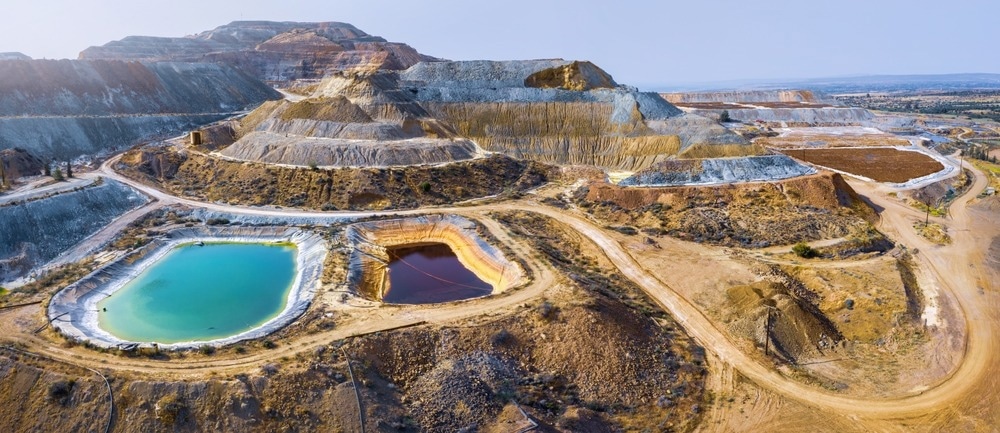Mining projects typically follow a long pathway from initial mineral discovery to active production. Various bottlenecks slow mine development and can prevent development from ever happening. A recent study by Minex Consulting, examining nearly 4,700 mineral discoveries since the 1950s, found that approximately 45 % have developed into operational mines.

Image Credit: Anna Kucherova/Shutterstock.com
This development timeline has been steadily stretching over the past two decades. According to S&P Global Commodity Insights, mines that began production in the mid-2000s took on average 12.7 years from discovery to operation. For mines that began production between 2020 and 2023, the average timeline increased to 17.9 years.2 Increasing timelines are raising concerns about the supply of critical minerals needed for digital and clean energy technologies.
Permitting – A Major Bottleneck to Mine Development
The permitting process is one of the most significant obstacles to bringing new mines online. Initiated during the pre-feasibility and feasibility phases, mine permitting is a multi-layered regulatory effort involving federal, state, local, and occasionally tribal authorities. As a result, the permitting stage alone can add many years to the mine development timeline.
For mining on federal lands, a critical part of the permitting process is the submission of a detailed plan of operation. The plan should outline the mine’s footprint, extraction methods, processing infrastructure, mitigation strategies, and long-term reclamation plans. Mines on state or private lands face similar requirements, though processes and timelines vary by jurisdiction.
In Wisconsin, US, for example, prospective mining companies must submit a preapplication notification at least 12 months before applying. Companies typically must then secure exploration licenses, obtain bulk sampling approval, undergo public hearings, file environmental impact reports, meet local zoning requirements, and receive multiple water, air, and land use permits. These steps must often be taken years before a full mining application can even be submitted.3
Public consultation and environmental assessments, while essential for responsible development, have expanded significantly in scope, stalling mine development. Environmental baseline assessments now often require multi-year seasonal data collection, and community engagement has evolved into a continuous negotiation rather than a single approval step.
Other Bottlenecks to Mine Development
Beyond permitting, several additional challenges contribute to project delays and rising development costs:
Financing Constraints
Despite strong long-term demand for minerals, exploration budgets are far below previous peaks. For example, copper exploration spending in 2023 was 34 % lower than in 2012, even before adjusting for inflation. The long gap between early investment and eventual production discourages funding, especially for smaller exploration companies.
Declining Deposit Size and Rising Complexity
Most of the high-grade, easiest-to-mine mineral deposits have been developed. Newer mineral discoveries are often smaller, located deeper underground, or require more complex processing methods, increasing technical and economic uncertainty.
Higher Environmental and Social Standards
Projects now must demonstrate not only minimal environmental impact, but also strong community consent. This can require years of dialogue with multiple stakeholder groups.
Market Volatility
Commodity cycles can leave projects stalled mid-development. Operators will often wait for more favorable price conditions or greater investor confidence before proceeding.
These factors and others are contributing to longer timelines. S&P Global Insights has projected that the longer timelines will result in critical deficits of important minerals like copper.2
Future Outlook
The increasing length of mine development cycles is creating strategic challenges for both the mining industry and mineral-dependent economies. As global demand rises - especially for minerals critical to energy and digital technologies - the need to bring new supply to market quickly is becoming more urgent.
Extended development timelines raise the risk of material shortages, increased price volatility, and growing reliance on foreign suppliers.
To address these pressures, mining companies are exploring new approaches to reduce time-to-market. Some are adopting phased or modular development strategies, launching operations at a smaller scale to generate early revenue and demonstrate economic potential. Others are starting environmental assessments and community engagement earlier in the exploration process, recognizing that trust-building and securing a social license to operate are just as vital as technical planning.
Strategic partnerships are also becoming more common. Major mining firms, automakers, technology companies, and governments are forming alliances to share development risk and secure access to critical materials.
Another growing trend is the expansion or reopening of sites near existing mines. These projects benefit from established infrastructure and often face fewer permitting hurdles. Meanwhile, improvements in processing technologies are being pursued to cut capital costs, reduce environmental impact, and boost recovery rates. While these steps can help speed things up, they don't eliminate the broader structural challenges that continue to slow mine development.
As the world shifts toward more mineral-intensive technologies, the slowing pace of mine permitting and construction has become a significant bottleneck. To be clear, permitting plays a vital role in balancing environmental protection and community interests with supply needs. Maintaining that balance will remain a key challenge for both governments and the mining sector.
References and Further Reading
- Zadeh, J. (2025 May 10). Understanding the Time Delay Between Mining Discovery and Development. Discovery Alert. https://discoveryalert.com.au/widening-gap-discovery-development-mining-2025/
- DeCoff, S. (2024 September 9). Copper Discoveries. S&P Global Commodity Insights. https://www.spglobal.com/market-intelligence/en/news-insights/research/major-copper-discoveries
- Wisconsin Department of Natural Resources. (Retrieved 2025 November 10). FERROUS (IRON) MINING PERMITTING PROCESS. https://dnr.wisconsin.gov/topic/Mines/FerrousPermitting.html
Disclaimer: The views expressed here are those of the author expressed in their private capacity and do not necessarily represent the views of AZoM.com Limited T/A AZoNetwork the owner and operator of this website. This disclaimer forms part of the Terms and conditions of use of this website.